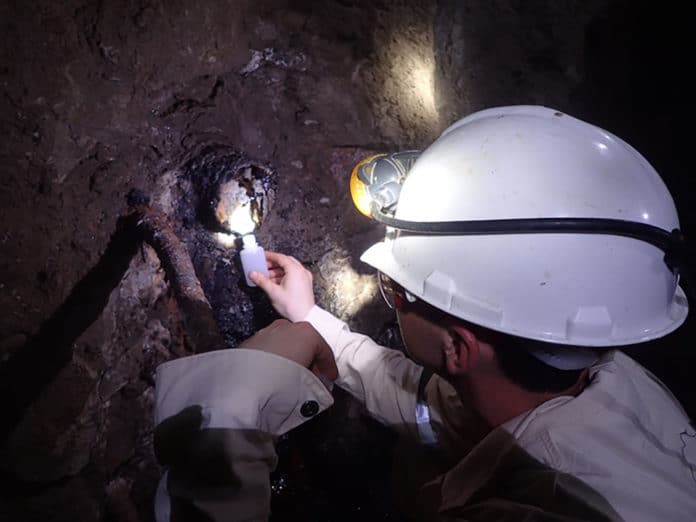Groundwater is a target of investigations for:
- Geologic storage of carbon or nuclear waste.
- New reservoirs of rapidly depleting resources of helium.
Deep hydrological conditions where groundwater is preserved over millions of years have been discovered using Noble gas-derived residence times. Now, scientists have now discovered 1.2 billion-year-old deep groundwater deep in gold- and uranium-producing mine in Moab Khotsong, South Africa.
They discovered the groundwater 2.9 km below the Earth’s surface in Moab Khotsong. This discovery sheds light on how life is sustained below the Earth’s surface and how it may thrive on other planets.
Oliver Warr, a research associate in the Department of Earth Sciences at the University of Toronto, said, “For the first time, we have insight into how energy stored deep in the Earth’s subsurface can be released and distributed more broadly through its crust over time. Think of it as a Pandora’s Box of helium-and-hydrogen-producing power, one that we can learn how to harness for the benefit of the deep biosphere on a global scale.”
Barbara Sherwood Lollar, professor in the Department of Earth Sciences at the University of Toronto and corresponding author, said, “Ten years ago, we discovered billion-year-old groundwater from below the Canadian Shield – this was just the beginning, it seems. Now, 2.9 km below the Earth’s surface in Moab Khotsong, we have found that the extreme outposts of the world’s water cycle are more widespread than once thought.”
Uranium and other radioactive elements hold new information about the groundwater’s role as a power generator for chemolithotrophic, or rock-eating, groups of cohabitating microorganisms previously discovered in the Earth’s deep subsurface. The alpha, beta, and gamma radiation produced when elements like uranium, thorium, and potassium decay in the subsurface has ripple effects and causes what is known as radiogenic reactions in the nearby rocks and fluids.
This newly discovered groundwater was found to have large amounts of radiogenic helium, neon, argon, and xenon, and an unprecedented discovery of an isotope of krypton – a never-before-seen tracer of this powerful reaction history. In a process known as radiolysis, the radiation also splits apart water molecules, creating significant amounts of hydrogen vital as an energy source for deep-earth microbial communities that cannot use sunlight for photosynthesis.
While the extremely low porosity of crystalline basement rocks in which these waters are found means the groundwaters are largely isolated and rarely mix, accounting for their 1.2-billion-year age, diffusion can still occur.
Warr said, “Solid materials such as plastic, stainless steel, and even solid rock are eventually penetrated by diffusing helium, much like the deflation of a helium-filled balloon. Our results show that diffusion has allowed 75 to 82 percent of the helium and neon originally produced by the radiogenic reactions to be transported through the overlying crust.“
“The study’s new insights on how much helium diffuses up from the deep Earth is a critical step forward, as global helium reserves run out, and the transition to more sustainable resources gains traction.”
“Humans are not the only life-forms relying on the energy resources of the Earth’s deep subsurface. Since the radiogenic reactions produce both helium and hydrogen, we can learn about helium reservoirs and transport and calculate hydrogen energy flux from the deep Earth that can sustain subsurface microbes on a global scale.”
“These calculations are vital for understanding how subsurface life is sustained on Earth and what energy might be available from radiogenic-driven power on other planets and moons in the solar system and beyond, informing upcoming missions to Mars, Titan, Enceladus, and Europa.”
Journal Reference:
- Warr, O., Ballentine, C.J., Onstott, T.C. et al. 86Kr excess and other noble gases identify a billion-year-old radiogenically-enriched groundwater system. Nat Commun 13, 3768 (2022). DOI: 10.1038/s41467-022-31412-2
